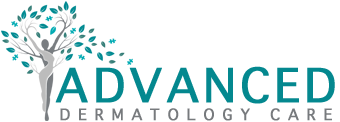Actinic Keratoses
An Actinic Keratoses (AK) represents a precancerous growth that develops when the skin is badly damaged by ultraviolet (UV) rays from the sun or indoor tanning. Left untreated, AKs may turn into a squamous cell carcinoma.

Actinic keratosis (AKs): AKs form on skin that soaks up lots of sun over the years. An actinic keratosis (ak-ti-nik ker-ah-TOE-sis), or AK, is a rough, dry, scaly patch or growth that forms on the skin.
The AKs can be treated before they become skin cancer. If skin cancer does develop, it can be caught early when treatment often cures skin cancer.
Actinic keratoses (AKs): AKs form on skin that soaks up lots of sun over the years. An actinic keratosis (ak-ti-nik ker-ah-TOE-sis), or AK, is a rough, dry, scaly patch or growth that forms on the skin.
Signs & Symptoms
Rough-feeling patch on skin that cannot be seen, rough patch or growth that feels painful or is “sensitive” to touch, itches or burns. On the lips, they appear as dry skin patches that do NOT resolve despite use of ample moisturizers and/ or use of chapstick.
Treatment Options
Cryotherapy: Destroys visible AKs by freezing them.* The treated skin often blisters and peels off within a few days to a few weeks. This is the most common treatment. When the skin heals, you may see a small white mark.*
Chemical peel: This is a medical chemical peel. You cannot get this peel at a salon or from a kit sold for at-home use. This strong peel destroys the top layers of skin.* The treated area will be inflamed and sore, but healthy new skin will replace it.*
Curettage: Your dermatologist carefully removes a visible AK with an instrument called a curette. After curettage, your dermatologist may use electrosurgery to remove more damaged tissue. Electrosurgery cauterizes (burns) the skin. New healthier skin will appear.*
Photodynamic Therapy (PDT): A solution is applied to make the skin more sensitive to light. After a few hours, the treated skin is exposed to a visible light, such as blue or laser light. The light activates the solution and destroys AKs. As the skin heals, new healthy skin appears.*
Prescription Medications: There are a number of topical medications that you can use at home to treat AKs either as a stand-alone procedure or in complement with the in-office procedure.
Do you have any questions about Actinic Keratoses? If you would like to schedule an appointment with one of our dermatologists in our Los Alamitos or Agoura Hills office, please contact us for a consultation.
*Disclaimer, results may vary from person to person.
